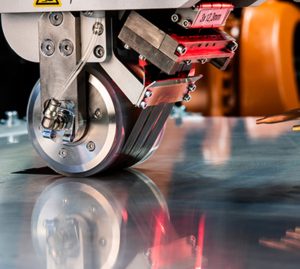Concrete damages caused by alkali silica reactions (ASR) are common and result in the formation of ASR products. Understanding the underlying mechanisms of the reaction to the nanoscale level has been the focus of recent studies. Typically, the reaction occurs in two phases, where the initial and second reaction phases respectively form the amorphous and crystalline ASR products. Despite the extensive research to characterize the chemical composition of the ASR products, there is insufficient data to clarify the difference between those formed in aggregates.
Previous research has established the potential difference between crystalline products formed in structures and at concrete tests at 38 °C and 60 °C. Nonetheless, these observations cannot be generalized because they were made in concretes with different mixture designs. Consequently, the characterization of the structural formation of amorphous products remains a great challenge due to the difficulty obtaining samples from the interior of the concrete aggregates rather than the surfaces. This is necessary to ensure that these products are not directly exposed to the chemical environmental of the cement paste that may alter their properties and results in misleading results. Therefore, there is an urgent need to fill the existing knowledge gap to understand better the ASR products formed in concrete aggregates.
To address these research inadequacies, researchers at Swiss Federal Laboratories for Materials Science and Technology: Dr. Andreas Leemann and Dr. Zhenguo Shi, in collaboration with Dr. Jan Lindgård from SINTEF in Trondheim (Norway), studied the characterization of crystalline and amorphous ASR products formed in concrete aggregates. The authors wanted to expand the existing knowledge to understand the difference in the structural and chemical composition of the ASR products and their variation in different aggregate particles of the same concrete. Their work is currently published in the journal, Cement and Concrete Research.
In their approach, the ASR products were formed in two different concrete mixtures exposed to the concrete prism test (CPT) at 38 °C and 60 °C. They were analyzed by scanning electron microscopy combined with Raman microscopy and energy-dispersive X-ray spectroscopy. Additionally, the Raman and 29 nuclear magnetic resonance (NMR) of the synthesized amorphous ASR products were also studied by NMR and Raman microscopy. The chemical composition of these products was measured and compared to elucidate their variations and differences.
The authors confirmed the two-stepped formation of the ASR products. The formation of amorphous ASR products, which took place first, was characterized by aggregate cracking that further led to the formation of crystalline products that filled the open cracks. The CPT temperatures altered the structures of the crystalline products. Crystalline products formed at 60 °C corresponded to K-shlykovite and were different from those formed at 38 °C. Compared to crystalline products, the amorphous products displayed higher Na/K-ratio despite having a similar average Ca/Si-ratio. Both exhibited silica structures dominated by Q3-sites with secondary amounts of Q2– sites.
In summary, the authors reported the in depth analysis of the amorphous and crystalline ASR products formed in two concrete aggregates using different characterization techniques. They presented a better understanding of the variations and differences in the chemical composition between the two. The microstructural evidence also confirmed some of the existing unclear speculations, such as the formation of amorphous products followed by crystalline ones. In a statement to Advances in Engineering, Dr. Andreas Leemann explained that their study advanced the knowledge on ASR products formed in concrete aggregates and would pave the way for developing better methods for minimizing the concrete damages induced by the alkali silica reactions.

Dr. Andreas Leemann is a senior research scientist at Empa in Switzerland. He received his PhD in Limnogeology at ETH Zürich. His research interests are the durability of concrete with a special focus on alkali silica reaction, the microstructure of cementitious materials and the properties of recycled aggregates concrete.
.

Dr. Jan Lindgård is a senior research scientist at SINTEF in Norway. He received his PhD on alkali silica reactions in concrete at NTNU in Trondheim. His research interests are the durability of concrete with a special focus on alkali silica reaction and moisture state in concrete.
.

Dr. Zhenguo Shi holds bachelor, master and PhD degrees in Civil Engineering, Material Science and Nanoscience. Since 2017, he joined Empa Switzerland as a postdoctoral researcher. He specializes in understanding the chemistry of construction materials using inter/multi-disciplinary experimental approaches together with thermodynamic modelling. His current research focuses on synthesis, characterization and development of thermodynamic data of alkali-silica reaction products.
.
Reference
Leemann, A., Shi, Z., & Lindgård, J. (2020). Characterization of amorphous and crystalline ASR products formed in concrete aggregates. Cement and Concrete Research, 137, 106190.





